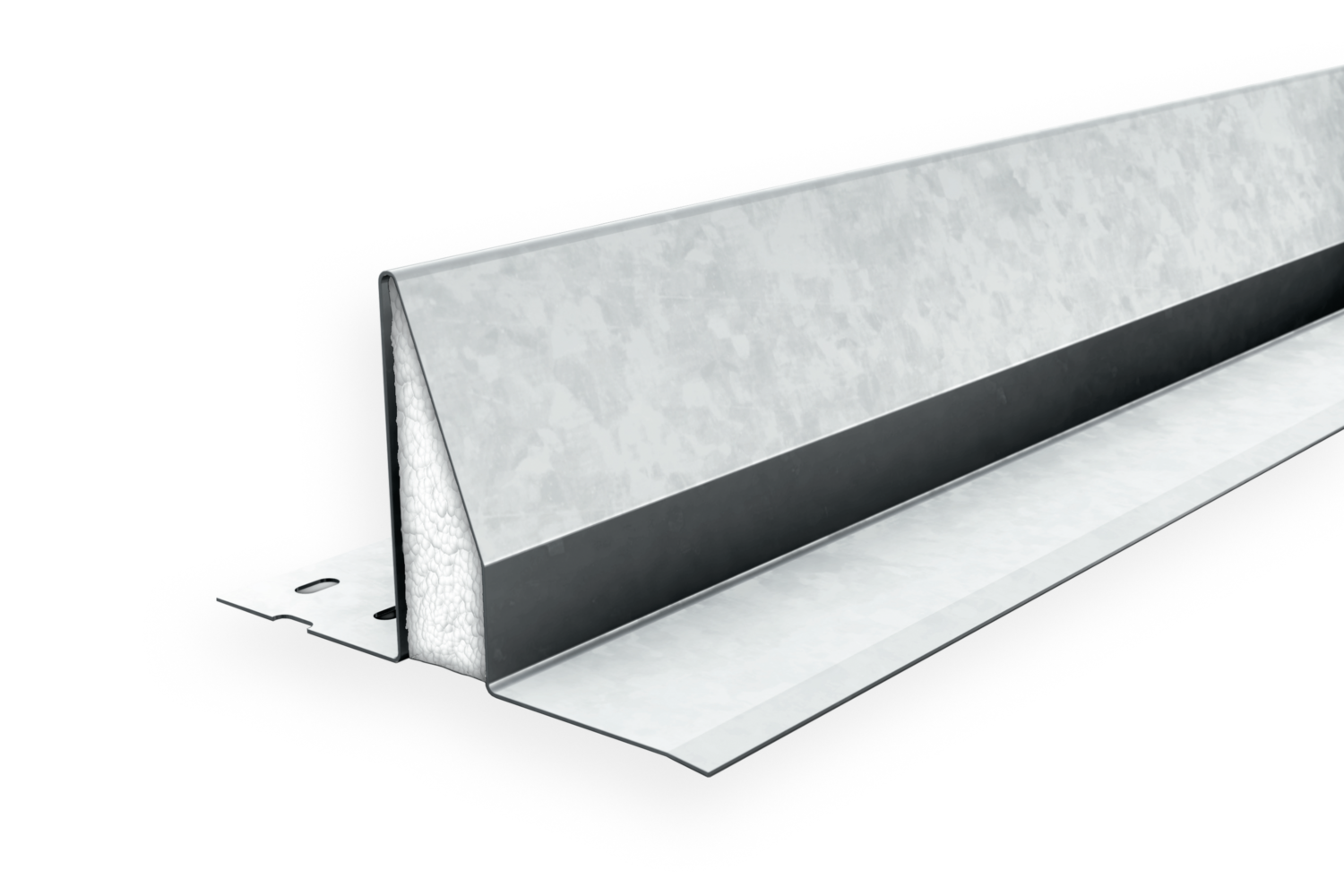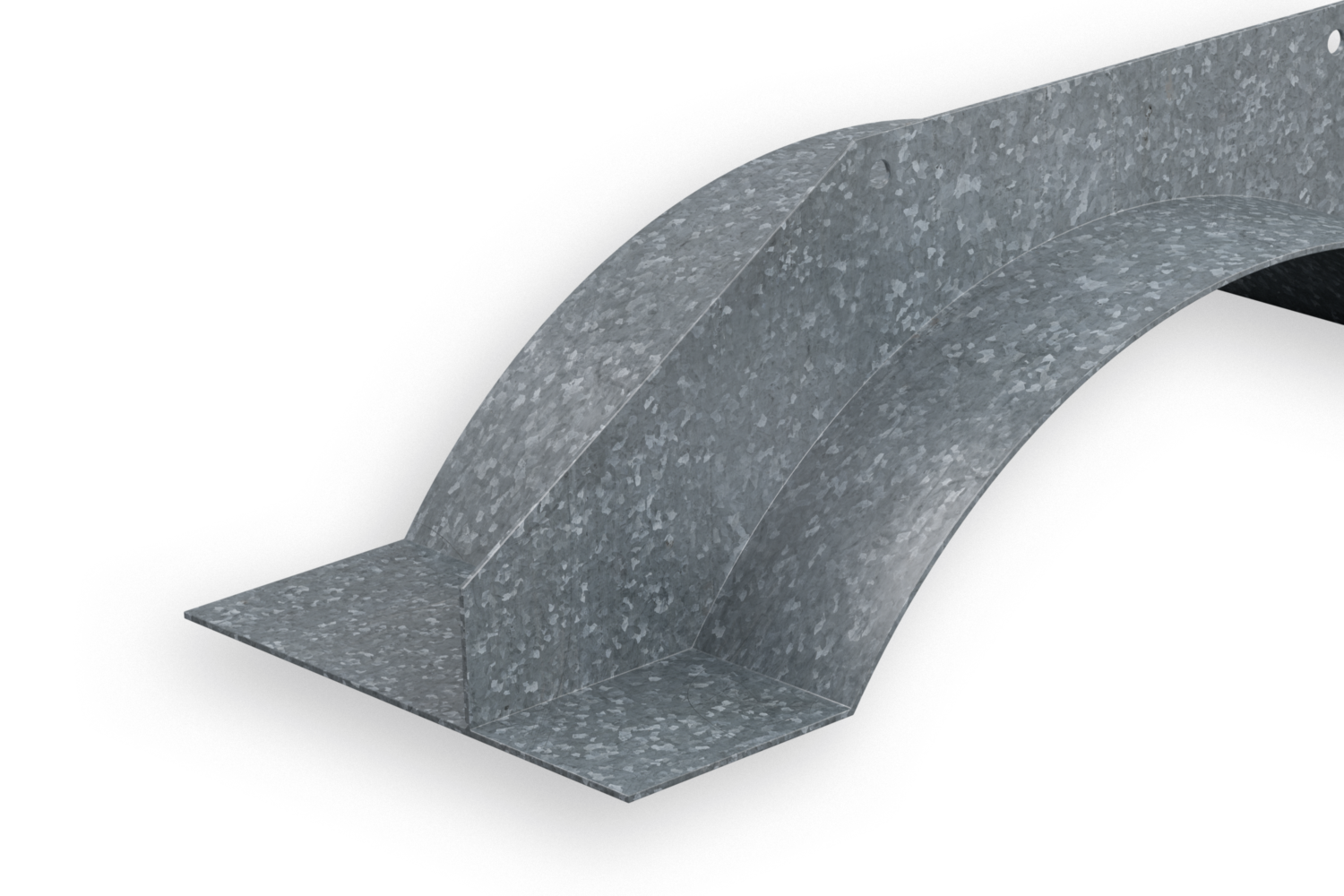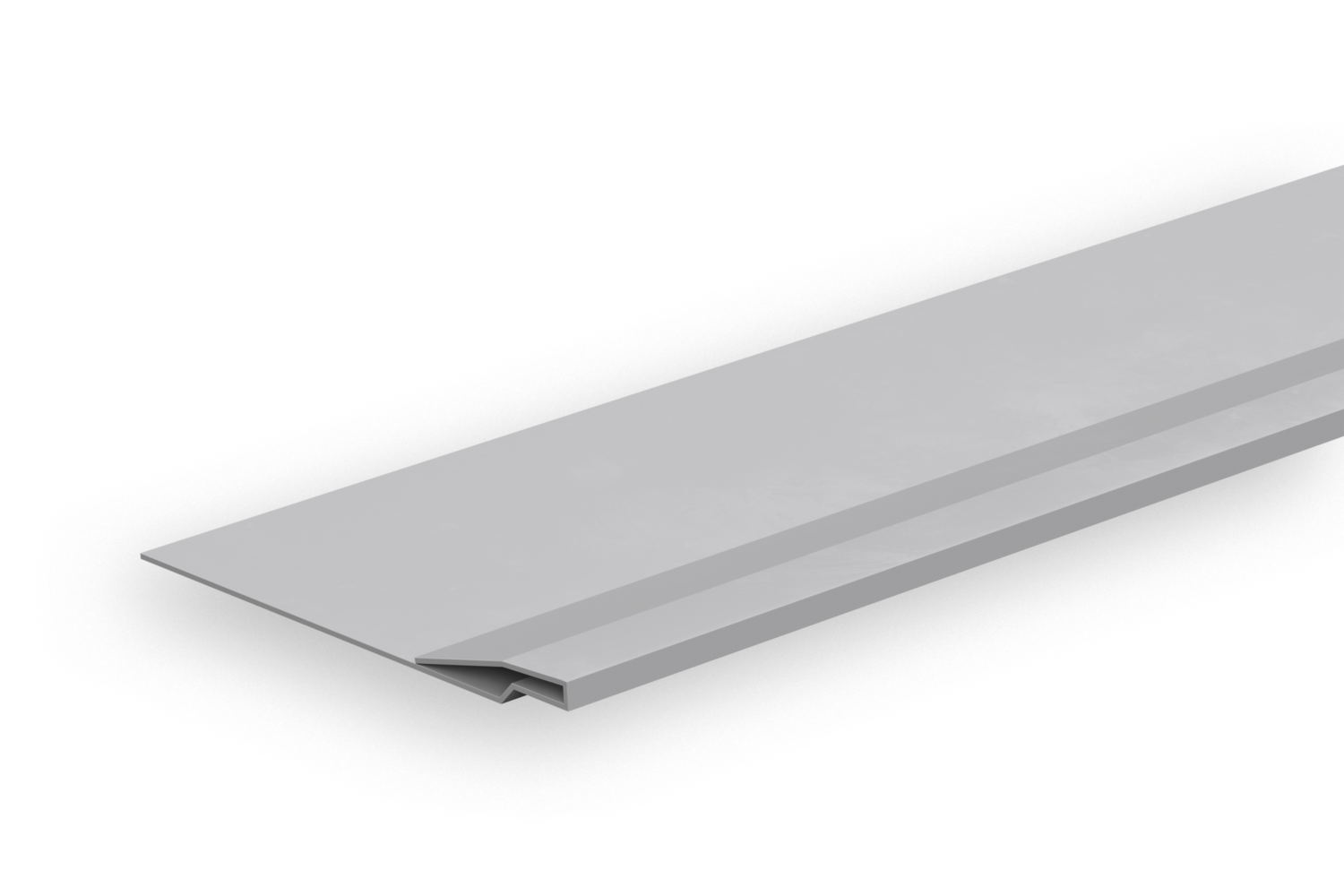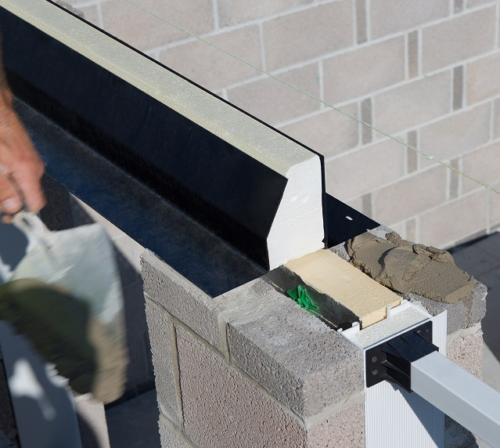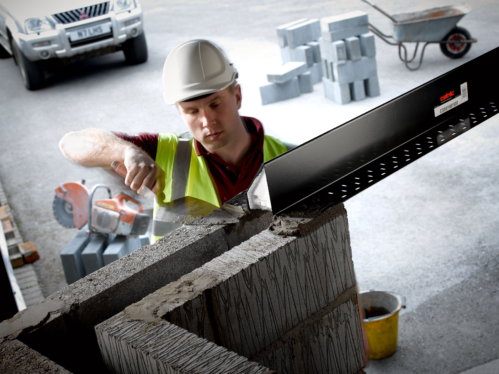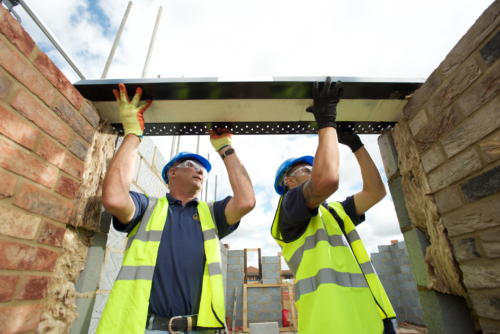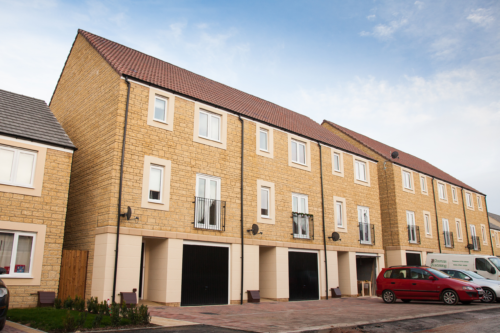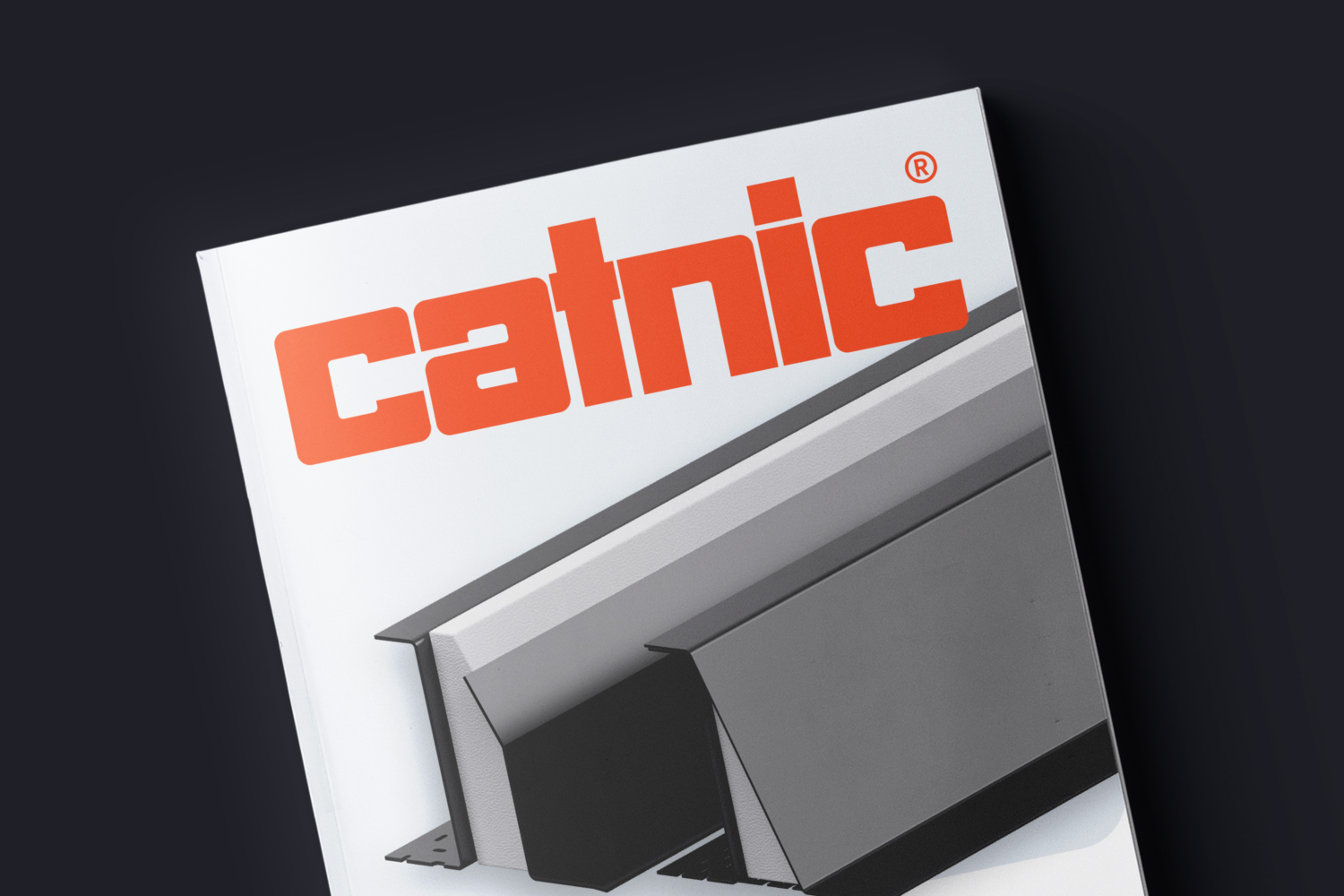- All Catnic Stainless Steel Lintels are manufactured from Austenitic Stainless Steel, grade 304S15 to BS EN 10088-2-1.4301
- Other grades of stainless steel are available on request.
- All Catnic galvanised steel loading tables apply.
- All stainless steel lintel lengths are manufactured to order, price and delivery on application.
- All standard stainless steel lintels from Catnic are BBA approved under Agrément Certificate No. 91/2638
- Special lintels in stainless steel are available manufactured to order.
- All stainless steel lintel products are manufactured to order.
The British Standards 'Code of practice for the use of masonry - Part 3: Materials and components, design and workmanship' BS5628-3:2005 implies that the lintel material/coating specifications should be limited to austenitic stainless steel in two distinct circumstances.
a) Non-aggressive Environment
Buildings exceeding three storeys in a non-aggressive environment. The material coating specification for products in contact with or embedded in an outer leaf of an external cavity wall or a single leaf external wall should be austenitic stainless steel.
b) Aggressive Environment
Buildings located in an aggressive environment (e.g. coastal sites). The material coating specification for products in both leaves of external walls should be austenitic stainless steel.
The outstanding anti-corrosion properties of stainless steel also make it suitable for specialist laboratory or medical applications, hospitals, residential care homes, schools and prisons where the whole life expectancy and maintenance programme become key design considerations.
Support & FAQs
Stainless steel lintels are the best choice where additional corrosion protection is required, making them suitable for places where the building’s life expectancy and maintenance requirements become key design considerations. This includes places like:
Coastal properties
Specialist laboratory or medical applications
Hospitals
Residential care homes
Schools
Prisons
Stainless steel is highly resistant to corrosion, even in harsh environments like coastal, industrial or high humidity. This makes stainless steel lintels ideal for buildings exposed to aggressive conditions.
Read more: Why choose steel lintels?
The size of lintel you need is mainly determined by the structural opening span you have to cover, plus an additional 300 mm. When correctly specified, a lintel should have a 150 mm bearing on either side of the clear span, be fully bedded on mortar, and sit on top of masonry.
Read more:Lintel size guide: How to specify lintel dimensions
Calculating the load imposed on lintels depends on a variety of factors, including the wall type in which the lintel is installed, and whether floor or roof loads need to be accounted for in addition to masonry loads.
Lintels are primarily designed to support uniformly distributed loads (UDLs), but on occasion, when point loads occur, they also need to be considered. This guide only provides an overview of how the loads on the lintel are established and should not be used as a substitute for obtaining loading calculations directly from the lintel manufacturer or a qualified structural engineer.
Specifying Catnic’s Thermally Broken Lintels (TBLs) will significantly improve the thermal efficiency of a property and help ensure that the project’s necessary environmental credentials are met. It is the only steel lintel on the market with no connecting brackets, providing a complete thermal break in the cavity.
Specifying Catnic TBLs can be done with ease as they have the same safe working loads as Catnic’s traditional cavity wall lintels – meaning TBLs can be specified like for like. Catnic TBLs can therefore be used for standard duty, heavy duty and extra heavy applications, making them suitable for a wide range of projects with cavities from 90 to 205 mm. You'll find our full range here.
What our customers think
Video Guides
When selecting a lintel, there are three factors that should be considered to ensure the correct specification: the type of wall construction, the dimensions of the structural opening and the total load on the lintel. In this video, we run you through the lintel selection process.
Once you have chosen the correct lintel for your project, it is crucial that the lintel be installed properly – if it is not, it could lead to serious issues for the building. In this video, we explain the installation considerations for cavity wall lintels.
Catnic’s Thermally Broken Lintel is the only lintel on the market to provide a complete thermal break between the inner and outer leafs. In this video, we outline the key benefits of Thermally Broken Lintels and explain the installation process.
Steel lintels, and specifically Catnic's thermally broken lintels, have a significant role to play in reducing thermal bridging and achieving carbon gains. They represent one of the simplest and most economical ways for building fabric to be designed and constructed to help achieve the carbon gains necessary to meet current and future building regulations.
